Photo Collection
The Mary D. Parsons Photograph Collection
In 1978, the Shiloh Museum’s photo collection consisted of a single box of assorted pictures. Today it is a massive collection of over 500,000 images documenting life in the Arkansas Ozarks. It is the largest public image archive in Arkansas.
Longtime museum assistant director Mary Dudley Parsons was responsible for developing the collection, and in 1993 the museum board of trustees honored her for her accomplishments by naming the collection after her. The collection represents the six counties of the Arkansas Ozarks—Benton, Boone, Carroll, Madison, Newton, and Washington—with images dating from the area’s early years up to the present day.
A sampling of our photo collection can be found on our Photo of the Month Archive and Online Exhibits pages. In addition, over 200 of our photos are included as part of the CALS Encyclopedia of Arkansas.
If you need some help in preserving your own photo collection, take a look at our Caring for Your Family Photos page.
Scope of the Collection
Along with photos of specific people and places, the photo collection includes subjects such as:
Scope of the Collection
Along with photos of specific people and places, the collection includes subjects such as
- Agriculture
- Barns and Outbuildings
- Businesses
- Celebrations
- Churches
- Communication
- Construction
- Disaster
- Health
- Medicine
- Military
- Mills
- Natural Resources
- Organizations
- Parks
- Poultry Industry
- Public Buildings
- Residences
- Rodeo of the Ozarks
- Schools
- Sports
- Towns
- Transportation
SELECTED COLLECTIONS
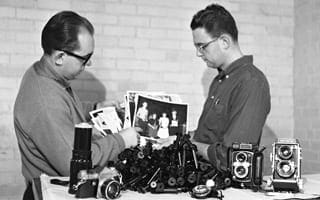
Springdale News Collection
A collection of events and people by the daily newspaper as it covered local news, circa 1960s–1996.

Northwest Arkansas Times Collection
Events and people collected by a daily newspaper as it covered local and regional news, circa 1950–1996.
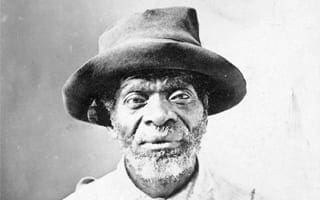
Washington County Historical Society Collection
Mostly Washington County people, places, and events, circa 1870–1970.
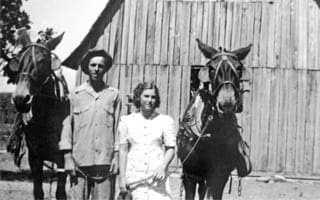
Otto Bennett Collection
Rural life in and around the south Madison County community of Boston, circa 1930–1970.
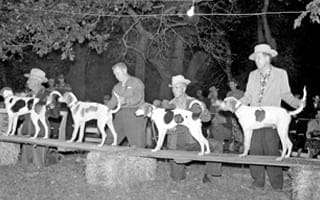
Howard Clark Collection
More about the lives of people, events, and businesses in and around Springdale, 1944–1964.
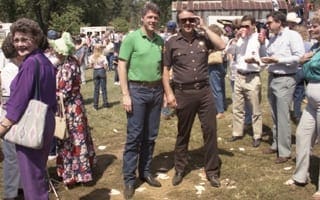
Jay Dee Studio Collection
Madison County people (mostly studio portraits) and events, 1976–1989.
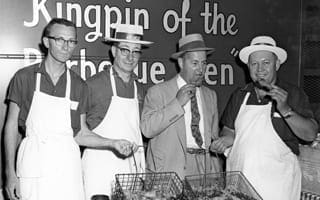
Guy Loyd Collection
Businesses, events, and people in and around Springdale, 1957–1980.
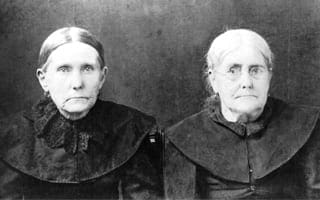
Madison County Genealogical and Historical Society Collection
More from Madison County, circa 1870–1970.
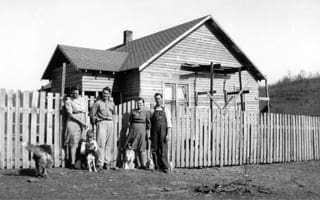
Wayne Martin Collection
People and places in and around Pettigrew (Madison County), 1920s–1930s.
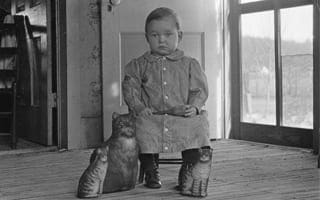
Marion Mason Collection
A collection of people and places in and around Johnson (Washington County), 1900s–1910s.

Ada Lee Shook Collection
Fayetteville people, area construction projects, and family life, 1920s–1955. Visit Carl Smith’s Fayetteville to see images from this collection.
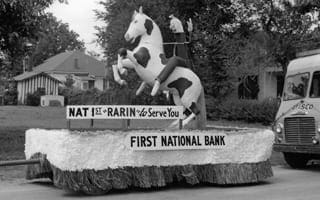
Gene Thompson Collection
People, businesses, and events in and around Springdale, mid-1950s–early 1960s.
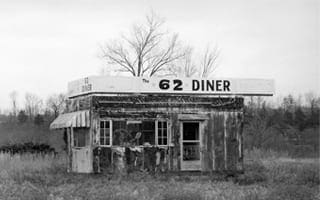
Bruce Vaughan Collection
Largely artistic images of buildings and landscapes in Washington County and the surrounding area, late 1950s–mid-1970s.
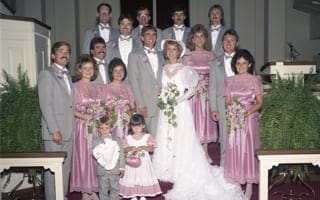
Mary Vaughan Image One Collection
Portraits primarily of Springdale people, 1970–1997.
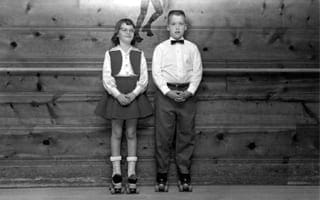
Ray M. Watson Collection
More from Springdale: people, events, and businesses in and around Springdale, 1957–1980.
Research Policy
Appointments: If you would like to view photographs, documents, research files, etc., in our historic photo collection, please try to make an appointment. This is to your advantage! Items can be pulled ahead of time and qualified staff will be available to allow access. We have limited library space and a small staff. Limited research access is available on Saturdays and holidays. While researchers with an appointment will take precedence over those that are drop-ins, we will work to help everyone as much as possible. No more than two research groups will be allowed in the library at one time. If we are unable to fulfill a research request during the time you are here, efforts will be made to send the information to you at a later date.
Researchers should provide as much information as possible in order for staff to facilitate the request. For instance, “Images of Fayetteville” is too generic a search topic considering that the museum has thousands of images that fall under this heading. Instead, specify a specific street, building, and/or time period to help the museum narrow its search. If a person is being researched, knowing his or her full name (nickname and various spellings, too) and where and when he or she lived is helpful.
Visiting our research library: Upon arrival in the library, researchers are asked to complete a form that includes their name and contact information, the topic being researched, and what the research will be used for. Such information helps the museum understand how our collections are used and provides useful statistics for grants, reports, etc. The information also allows the museum to keep in touch with researchers should new material relevant to their research be collected.
The museum reserves the right to ask that bags, purses, briefcases, notebooks, coats, etc., be kept separate from the researcher’s work area; an exception may be made for uncased laptop computers. All materials are subject to search at the discretion of staff. Food, drink, and smoking are not permitted in the library. Children must be supervised at all times.
Researchers must take notes in pencil using paper provided by staff. Museum holdings must not be marked on in any way and must be handled according to staff guidelines. Researchers may be required to wear gloves (provided by the museum) while handling certain materials. Use of cameras or scanners to copy images is not permissible. Cameras may be used with some research materials if copyright permits; please check first with research library staff.
Fees: Most research assistance is offered free of charge. A fee may be assessed due to lengthiness and/or difficulty of request. Research can be conducted in person or remotely by email, phone, or mail.
Copies of research materials and photos are available for a fee. The museum reserves the right to deny reproduction should doing so cause harm to the object or if the object has known access or copyright restrictions. Researchers are responsible for compliance with laws governing copyright and literary property rights. Neither the granting of access to materials nor the copying of materials convey or imply conveyance of the right to publish or use the materials in any way. If the material is used in a publication, film, video, etc., one copy of that production should be sent by the user to the museum for inclusion in the museum’s collection at no cost to the museum.
Processing time: Every effort will be made to fulfill a research request in a timely manner. Be advised that staff may not be able to provide immediate assistance due to work on previous requests or other museum activities. If this is the case, staff will provide an estimate of the time it may take to complete the order. If a photograph is wanted for a publication, it is important to contact the museum a few months ahead of the publisher’s deadline. Images may be copyrighted, requiring lengthy permission procedures.
To make an appointment or for more information, contact our Historian and research librarian, Rachel Whitaker.
Photo and Document Reproduction Fees
USE OF PHOTOS AND DOCUMENTS
Persons interested in publishing museum photos in any media must complete an “Application for Permission to Publish” form and pay the applicable fees. We are unable to alter the fee structure outlined below for use of our photos or for their physical or digital reproductions. These fees help pay for the technology, equipment, and other related costs of caring for photos, making them publicly accessible, and reproducing them for public use.
In the Application for Permission to Publish form, applicants agree to comply with the museum’s Conditions for Reproduction of Photographic Images:
- All photographic reproductions shall be for an approved, one-time, one-edition use only. Requests for additional uses, editions, or formats shall be made in writing to the photo archivist. The user shall incur a fine of three times the normal commercial use fee for each unauthorized reproduction.
- Photographs may not be altered (e.g., cropped, overprinted, bled) in any way, unless authorized in writing by the photo archivist.
- The credit line, “Courtesy of the Shiloh Museum of Ozark History / [name] Collection [catalog number]” shall be attributed to each image reproduced. Abbreviations shall not be permitted. The credit line shall appear:
a. For printed material or electronic media, in immediate proximity to the reproduction or in the section within the publication devoted to photographic credits.
b. For film and video use, included with other “Sources of Illustrations.” Collection name and catalog number may be omitted.
c. For exhibitions, within the exhibition area. - One complete, complimentary copy of the publication or other commercial product shall be furnished to the museum, unless the image was not used. All expenses for shipping and handling are to be borne by the applicant.
- In authorizing the publication of an image, the museum does not surrender its own right, title, ownership, or right to publish or to grant permission for others to do so. The museum assumes no responsibility for infraction of copyright laws, invasion of privacy, or improper or illegal use that may arise from reproduction of the image.
- In the case where copyright is held by a third party, the applicant shall secure and provide to the museum written permission from that party. The applicant shall agree to indemnify the museum against any third-party claims of copyright infringement.
- The museum reserves the right to deny permission to reproduce an image from its collection to any applicant whose product is not acceptable to the museum for any reason.
The museum does not lend its negatives. Photos may be loaned only to qualified institutions in accordance with the museum’s loan policy.
The museum reserves the right to refuse any request for the reproduction of its images or research materials.
PHOTO PROCESSING TIME
Every effort will be made to complete a photo order in a timely manner. Be advised that staff may not be able to provide immediate assistance due to work on previous orders or other museum activities. If this is the case, staff will provide an estimate of the time it may take to complete the order.
FEE TABLE
All fees are in U.S. dollars and must be paid in advance before work will proceed.
| RESEARCH FEES | ||||
| If requested, non-profit and educational organizations must provide proof of tax-exempt status. | Non-Profit | For Profit/ Commercial | ||
| Research Charge Most research assistance is available at no cost. Charges may be assessed due to lengthiness and/or difficulty of request. Price per hour. |
$15 | $30 | ||
| PRODUCTION FEES Price Per Image |
||||
| Museum members, current volunteers, and students with ID receive $1 discount on each print or scan. | ||||
| Photographic Print Black and white printed in darkroom; color printed on laser jet printer. |
||||
|
5×7 |
$7 | |||
|
8×10 |
$10 | |||
|
11×14 |
$30 | |||
| Digital Image | ||||
|
72-150 dpi |
$7 | |||
|
300 dpi (minimum required for scan from 35mm negative) |
$10 | |||
|
600 dpi |
$15 | |||
|
1200 dpi |
$20 | |||
| Photocopy | ||||
|
8½x11, 11×14 |
20¢ | |||
|
11×17 |
40¢ | |||
| USE FEES Price Per Image—Per One-Time, One-Project, One-Format Use |
||||
| If requested, non-profit organizations must provide proof of tax-exempt status. | Non-Profit | Non-Profit Fundraising or For-Profit (non-advertising) | For-Profit (advertising) | |
| Research Use, Individual Use | $0 | $0 | n/a | |
| Display Performance, lecture, presentation, exhibit, sign, informational kiosk, etc. |
$0 | $25 | $100 | |
| Print publication, E-Book, Video/CD-Rom/DVD, Novelty Item (U.S. Rights) Book (per edition), calendar, postcard, T-shirt, map, non-local periodicals, liner notes, brochure, thesis/school paper, teaching materials, PowerPoint program, CD-ROM (75 dpi only), etc. Inquire about World Rights. |
||||
| • For Free Distribution | $10 | $20 | $100 | |
| • For Subscription Distribution Local and state non-profit historical periodicals only | $0 | n/a | n/a | |
|
• For Sale Production run 1-500 |
$15 | $25 | $100 | |
|
Production run 501-5,000 |
$20 | $40 | inquire | |
|
Production run 5,001-20,000 |
$50 | $100 | inquire | |
|
Production run 20,001+ |
inquire | inquire | inquire | |
| Book/CD/DVD Cover (includes promotional use) | twice print rate | |||
| Website 3-year term; 75 dpi only; includes discrete watermark |
$20 | inquire | ||
| Film/Video Broadcast (U.S. Rights) 10-year term. Television program, commercial studio release, news magazine, YouTube, promotional film, etc. Inquire about World Rights. |
$20 | inquire | ||
| Newspaper, TV News 75 dpi only for electronic editions; includes discrete watermark |
Daily News | Advertising | ||
|
Northwest Arkansas |
$0 | inquire | ||
|
Outside Northwest Arkansas |
$25 | inquire | ||
| ADDITIONAL FEES | ||||
| CD | $2 | |||
| Domestic Postage and Handling The museum will waive fee if customer provides an express delivery service account number. |
||||
|
Photocopies only (1-8 pages) |
60¢ | |||
|
Photographic prints – 5×7 (1-5 prints) |
$3 | |||
|
Photographic prints – 8×10 (1-3 prints) |
$4 | |||
|
Photographic prints – 11×14 (1-3 prints) |
$7 | |||
|
CD |
$4 | |||
| New Photography Charged in the absence of an existing photo or negative. Does not include cost of print. Price per image |
||||
|
B/W photography |
$20 | |||
|
Digital photography |
$10 | |||
| Digital Manipulation of a Scanned Image The museum can digitally manipulate a scanned image to remove or soften rips, stains, losses, notations, etc., or to enhance a faded or darkened area. Such manipulations are primarily for damage incurred AFTER the print was made. The museum will NOT alter an image to change the photographer’s intent (e.g., remove phone lines) or remove deliberate historic damage (e.g., a defaced face). The museum reserves the right to deny a request for digital manipulation if it believes such action will alter the integral historical accuracy of the image and the information that it presents. Price per image |
||||
|
Minimal Digital Manipulation |
$5 | |||
|
Extensive Digital Manipulation |
$20+ | |||
| Special Fees May be charged for some for-profit requests at the discretion of the museum director. |
||||
|
All fees are in U.S. dollars and are payable to the Shiloh Museum of Ozark History. Fees subject to change without notice. The Shiloh Museum of Ozark History reserves the right to refuse any request for the reproduction of its images or research materials. Updated 2025 |
||||
Photo and Document Reproduction Fees
USE OF PHOTOS AND DOCUMENTS
Persons interested in publishing museum photos in any media must complete an “Application for Permission to Publish” form. In it, applicants agree to comply with the museum’s Conditions for Reproduction of Photographic Images:
1. All photographic reproductions shall be for an approved, one-time, one-edition use only. Requests for additional uses, editions, or formats shall be made in writing to the photo archivist. The user shall incur a fine of three times the normal commercial use fee for each unauthorized reproduction.
2. Photographs may not be altered (e.g., cropped, overprinted, bled) in any way, unless authorized in writing by the photo archivist.
3. The credit line, “Courtesy of the Shiloh Museum of Ozark History / [name] Collection [catalog number]” shall be attributed to each image reproduced. Abbreviations shall not be permitted. The credit line shall appear:
a. For printed material or electronic media, in immediate proximity to the reproduction or in the section within the publication devoted to photographic credits.
b. For film and video use, included with other “Sources of Illustrations.” Collection name and catalog number may be omitted.
c. For exhibitions, within the exhibition area.
4. One complete, complimentary copy of the publication or other commercial product shall be furnished to the museum, unless the image was not used. All expenses for shipping and handling are to be borne by the applicant.
5. In authorizing the publication of an image, the museum does not surrender its own right, title, ownership, or right to publish or to grant permission for others to do so. The museum assumes no responsibility for infraction of copyright laws, invasion of privacy, or improper or illegal use that may arise from reproduction of the image.
6. In the case where copyright is held by a third party, the applicant shall secure and provide to the museum written permission from that party. The applicant shall agree to indemnify the museum against any third-party claims of copyright infringement.
7. The museum reserves the right to deny permission to reproduce an image from its collection to any applicant whose product is not acceptable to the museum for any reason.
The museum does not lend its negatives. Photos may be loaned only to qualified institutions in accordance with the museum’s loan policy.
The museum reserves the right to refuse any request for the reproduction of its images or research materials.
PHOTO PROCESSING TIME
Every effort will be made to complete a photo order in a timely manner. Be advised that staff may not be able to provide immediate assistance due to work on previous orders or other museum activities. If this is the case, staff will provide an estimate of the time it may take to complete the order.
FEE TABLE
All fees are in U.S. dollars and must be paid in advance before work will proceed.
RESEARCH FEES
If requested, non-profit and educational organizations must provide proof of tax-exempt status.
Research Charge. Most research assistance is available at no cost. Charges may be assessed due to lengthiness and/or difficulty of request. Price per hour.
Non-profit: $15
For-profit/ commercial: $30
PRODUCTION FEES
Price per image. Museum members, current volunteers, and students with ID receive $1 discount on each print or scan.
Photographic print. Black and white printed in darkroom; color printed on laser jet printer.
5×7: $7
8×10: $10
11×14: $30
Digital image
72-150 dpi: $7
300 dpi (minimum required for minimum required for scan from 35mm negative): $10
600 dpi: $15
1200 dpi: $20
Photocopy
8.5×11, 11×14: 20¢
11×17: 40¢
USE FEES
Price per image—per one-time, one-project, one-format use. If requested, non-profit organizations must provide proof of tax-exempt status.
Research use, individual use
Non-profit: $0
Non-profit fundraising or for-profit non-advertising: $0
For-profit advertising: n/a
Display. Performance, lecture, presentation, exhibit, sign, informational kiosk, etc.
Non-profit: $0
For-profit advertising: $100
Print publication, e-book, video/CD/DVD, novelty item (U.S. rights). Book (per edition), calendar, postcard, T-shirt, map, non-local periodicals, liner notes, brochure, thesis/school paper, teaching materials, PowerPoint program, CD (75 dpi only), etc. Inquire about World Rights.
For free distribution
Non-profit: $10
Non-profit fundraising or for-profit non-advertising: $20
For-profit advertising: $100
For subscription distribution. Local and state non-profit historical periodicals only.
Non-profit: $0
Non-profit fundraising or for-profit non-advertising: n/a
For-profit advertising: n/a
For sale
Production run 1-500
Non-profit: $15
Non-profit fundraising or for-profit non-advertising: $20
For-profit advertising: $100
Production run 501-5,000
Non-profit: $20
Non-profit fundraising or for-profit non-advertising: $40
For-profit advertising: inquire
Production run 5001-20,000
Non-profit: $50
Non-profit fundraising or for- profit non-advertising: $100
For-profit advertising: inquire
Production run 20,000+
Non-profit: inquire
Non-profit fundraising or for-profit non-advertising: inquire
For-profit advertising: inquire
Book, CD cover. Includes promotional use.
Twice print rate
Website. 3-year term, 75 dpi only, includes discrete watermark.
Non-profit: $20
Non-profit fundraising or for-profit non-advertising: inquire
For-profit advertising: inquire
Film/video broadcast (U.S. rights). 10-year term. Television program, commercial studio release, news magazine, YouTube, promotional film, etc. Inquire about World Rights.
Non-profit: $20
Non-profit fundraising or for-profit non-advertising: inquire
For-profit advertising: inquire
Newspaper, TV news. 75 dpi only for electronic editions; includes discrete watermark.
Daily news, Northwest Arkansas: $0
Advertising, Northwest Arkansas: inquire
Daily news, outside Northwest Arkansas: $25
Advertising, outside Northwest Arkansas: inquire
ADDITIONAL FEES
CD: $2
Domestic postage and handling. The museum will waive fee if customer provides an express delivery service account number.
Photocopies only (1-8 pages): 60¢
Photographic prints – 5×7 (1-5 prints): $3
Photographic prints – 8×10 (1-3 prints): $4
Photographic prints – 11×14 (1-3 prints): $7
CD: $4
New photography. Charged in the absence of an existing photo or negative. Does not include cost of print. Price per image.
B/W photography: $20
Digital photography: $10
Digital manipulation of a scanned image. The museum can digitally manipulate a scanned image to remove or soften rips, stains, losses, notations, etc., or to enhance a faded or darkened area. Such manipulations are primarily for damage incurred AFTER the print was made. The museum will NOT alter an image to change the photographer’s intent (e.g., remove phone lines) or remove deliberate historic damage (e.g., a defaced face). The museum reserves the right to deny a request for digital manipulation if it believes such action will alter the integral historical accuracy of the image and the information that it presents. Price per image.
Minimal digital manipulation: $5
Extensive digital manipulation: $20+
Special fees. May be charged for some for-profit requests at the discretion of the museum director.
All fees are in U.S. dollars and are payable to the Shiloh Museum of Ozark History. Fees subject to change without notice. The Shiloh Museum of Ozark History reserves the right to refuse any request for the reproduction of its images or research materials. Updated 2025
Conditions for Reproduction of Photographic Images
- All photographic reproductions shall be for an approved, one-time, one-edition use only. Requests for additional uses, editions, or formats shall be made in writing to the photo archivist. The user shall incur a fine of three times the normal commercial use fee for each unauthorized reproduction.
- Photographs may not be altered (e.g., cropped, overprinted, bled) in any way, unless authorized in writing by the photo archivist.
- The credit line, “Courtesy of the Shiloh Museum of Ozark History / [name] Collection [catalog number]” shall be attributed to each image reproduced. Abbreviations shall not be permitted. The credit line shall appear:
a. For printed material or electronic media, in immediate proximity to the reproduction or in the section within the publication devoted to photographic credits.
b. For film and video use, included with other “Sources of Illustrations.” Collection name and catalog number may be omitted.
c. For exhibitions, within the exhibition area. - One complete, complimentary copy of the publication or other commercial product shall be furnished to the museum, unless the image was not used. All expenses for shipping and handling are to be borne by the applicant.
- In authorizing the publication of an image, the museum does not surrender its own right, title, ownership, or right to publish or to grant permission for others to do so. The museum assumes no responsibility for infraction of copyright laws, invasion of privacy, or improper or illegal use that may arise from reproduction of the image.
- In the case where copyright is held by a third party, the applicant shall secure and provide to the museum written permission from that party. The applicant shall agree to indemnify the museum against any third-party claims of copyright infringement.
- The museum reserves the right to deny permission to reproduce an image from its collection to any applicant whose product is not acceptable to the museum for any reason.
Gift Information for Photo Lenders
Since 1968 the Shiloh Museum of Ozark History has relied on the generosity of numerous contributors to build the region’s best and largest archive of Ozark images. These wonderful photos have been put to good use through the years enlivening the museum’s exhibits, illustrating publications, and enhancing educational programs. The collection has been used in other ways as well. Family researchers have found pictures of their ancestors, students have used images for their school projects, and reporters have incorporated photos in their stories. In order to continue this valuable service the museum asks for your help. By signing the Photo Loan Receipt and Reproduction Permission form you allow the museum the right to make your images available to researchers, educators, authors, museums, and the like—people and institutions who promote the learning and enjoyment of history.
Listed on the Photo Loan Receipt & Reproduction Permission form are two choices:
• Unrestricted Access. Allows the museum to use the images for its own in-house programs, exhibits, publications, etc., as well as make them available to family researchers, authors, documentary producers, journalists, museums, etc.
• Restricted Access. Allows the museum to use the images for its own in-house programs, exhibits, publications, etc., but disallows the Museum from sharing them with anyone else unless we receive permission from you to do so.
We sincerely hope you will agree to give the museum “Unrestricted Access” to these images. By having your permission on file, we won’t have to contact you repeatedly about using your photos. Also, years from now, when we get a request to use your image, we won’t have to worry about trying to find you or your heirs. However, if you only give the museum “Restricted Access” to use these photos and we’re unable to contact you or your heirs, we’ll have to deny all requests for their use. Your wonderful images may be lost to future generations.
Rest assured the museum will not take its responsibility to your images lightly. We will safeguard the use of them as if they were our own and always credit you as the lender. We’ll carefully consider the merits of each request to use an image, granting only those that best serve the appreciation of history. Please be aware that the museum may charge fees for the reproduction and/or use of photos, in order to cover the cost of photographic materials and staff time.
Thank you so much for your understanding and cooperation. We appreciate your support of the Shiloh Museum and its mission to share and promote area history.
Angie Albright
Director
How the Museum Acquires Photos
The majority of the photos in our collection have either been generously donated outright or loaned to the museum for copying. With a loan, museum staff make and retain a negative and file print for each of the lender’s photos before returning the originals.
Although loans are very much appreciated, donations of photos and negatives are preferred because they allow the museum to preserve and share the original image in a safe and accessible way. A copy of a loaned photo will never be as clear and informative as the original image.
Persons who loan photos to the museum are asked to sign a “Photo Loan Receipt & Reproduction Permission” form which outlines gift information for photo lenders. Signing this form allows us to make the images available to current and future researchers.
To learn more about our collecting areas or how to go about donating or lending historic images, contact Image Collections Manager, Stephanie Carter.
